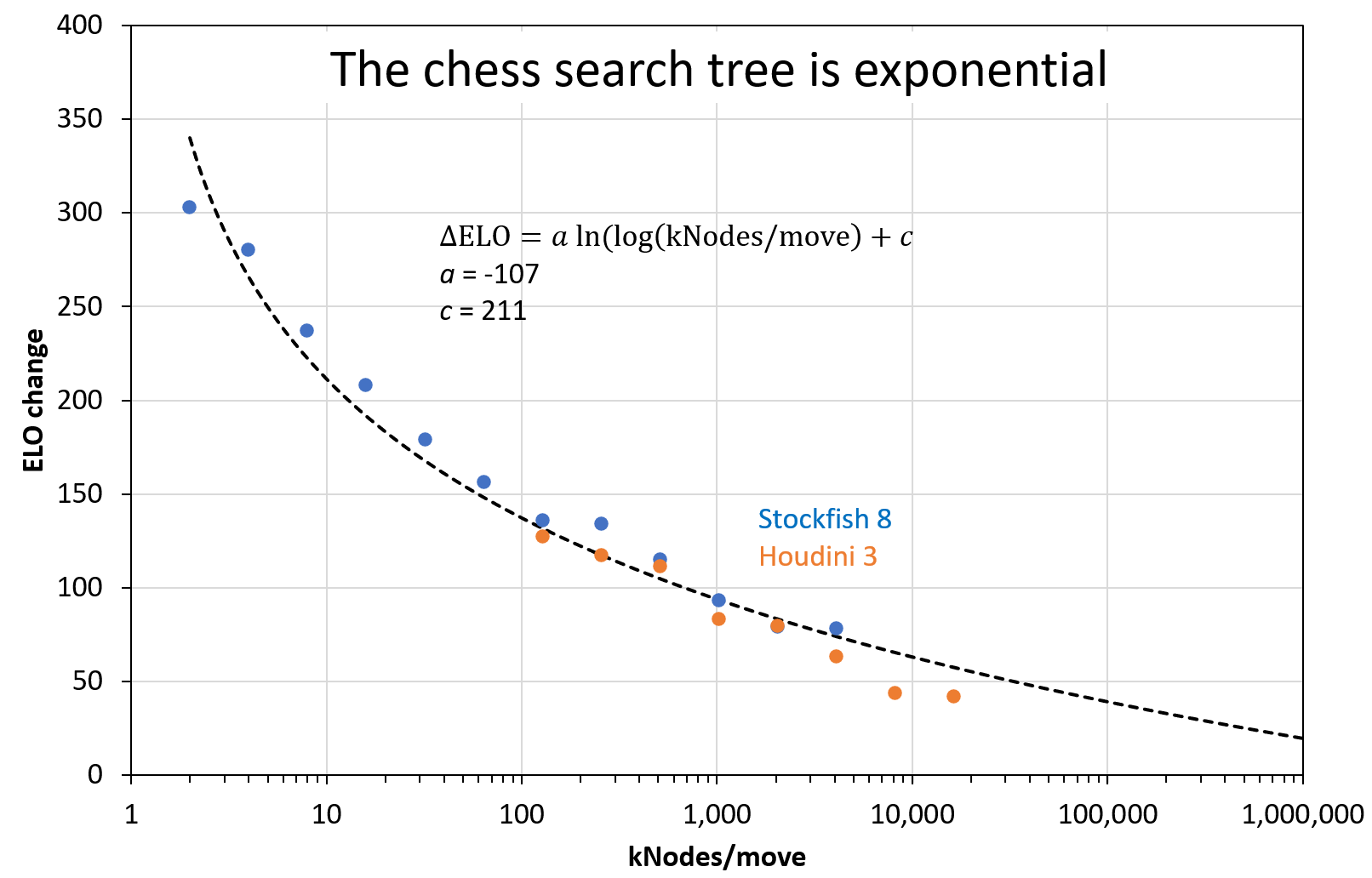What about the Landauer limit? We are 3 orders of magnitude from the Landauer limit ( J/op), see my article here on Lesswrong. The authors list several physical limitations, but this one seems to be missing. It may pose the most relevant limit.
That's an excellent question, pondered by the brightest minds. The great Freeman Dyson proposed a solution dubbed eternal intelligence (Dyson 1979, Reviews of Modern Physics, Volume 51, Issue 3, July 1979, pp.447-460). Basically, some finite amount of matter=energy is stored. As the universe cools over time, energy costs per computation decrease (logarithmically, but forever). After each cooling time period, one can use some fraction of the remaining energy, which will thus never go to zero, leading to eternal consciousness.
It was later understood that the expansion of the universe is accelerating. If that holds, the concept breaks down, as Dyson admitted. In the far future, any two observers will be separated, making the remaining subjects very lonely.
I think this calculation is invalid. A human is created from a seed worth 700 MB of information, encoded in the form of DNA. This was created in millions of years of evolution, compressing/worth a large (but finite) amount of information (energy). A relevant fraction of hardware and software is encoded in this information. Additional learning is done during 20 years worth 3 MWh. The fractional value of this learning part is unknown.
How can we know that "it is possible to train a 200 IQ equivalent intelligence for at most 3 MW-hr"?
How did von Neumann come close to taking over the world? Perhaps Hitler, but von Neumann?
Sure! I argue that we just don't know whether such a thing as "much more intelligent than humans" can exist. Millions of years of monkey evolution have increased human IQ to the 50-200 range. Perhaps that can go 1000x, perhaps it would level of at 210. The AGI concept makes the assumption that it can go to a big number, which might be wrong.
From what I understand about "ELO inflation", it refers to the effect that the Top 100 FIDE players had 2600 ELO in 1970, but 2700 ELO today. It has been argued that simply the level increased, as more very good players entered the field. The ELO number as such should be fair in both eras (after playing infinitely many games...). I don't think that it is an issue for computer chess comparisons. Let me know if you have other data/information!
I ran the experiment "Rebel 6 vs. Stockfish 13" on Amazon's AWS EC2. I rented a Xeon Platinum 8124M which benched at 18x 1.5 MNodes/s. I launched 18 concurrent single-threaded game sets with 128 MB of RAM for each engine. Again, ponder was of, no books, no tables. Time settings were 40 moves in 60s + 0.6 per move, corresponding to 17.5 MNodes/move. For reference, SF13 benches at ELO 3630 at this setting (entry "64 bit"); Rebel 6.0 got 2415 on a Pentium 90 (SSDF Computer Rating List (01-DEC-1996).txt, 90 kN/move).
The result:
- 1911 games played
- 18 draws
- No wins for Rebel
- All draws when Rebel played white
- ELO difference: 941 +- 63
Interpretation:
- Starting from 3630 for SF13, that corresponds to Rebel on a modern machine: 2689.
- Up from 2415, that's +274 ELO.
- The ELO gap between Rebel on a 1994 Pentium 90 (2415) and SF13 on a 2020 PC (3630) is 1215 points. Of these, 274 points are closed with matching hardware.
- That gives 23% for the compute, 77% for the algorithm.
Final questions:
- Isn't +274 ELO too little for 200x compute?
- We found 50% algo/50% compute for SF3-SF13. Why is that?
Answer: ELO gain with compute is not a linear function, but one with diminishing returns. Thus, the percentage "due to algo" increases, the longer the time frame. Thus, a fixed percentage is not a good answer.
But we can give the percentage as a function of time gap:
- Over 10 years, it's ~50%
- Over 25 years, it's ~22%
With data from other sources (SF8, Houdini 3) I made this figure to show the effect more clearly. The dashed black line is a double-log fit function: A base-10 log for the exponential increase of compute with time, and a natural log for the exponential search tree of chess. The parameter values are engine-dependent, but should be similar for engines of the same era (here: Houdini 3 and SF8). With more and more compute, the ELO gain approaches zero. In the future, we can expect engines whose curve is shifted to the right side of this plot.

- With a baseline of 10 MNodes/move for SF3, I need to set SF13 to 0.375 MNodes/move for equality. That's a factor of 30. Caveat: I only ran 10 games which turned out equal, and only at 10 MNodes/move for SF3.
- Yes: Rebel6 at normal 2021 settings (40 moves in 15 min) can be approximately matched with SF13 at 20 kNodes/move. More precisely: I get parity between Rebel6 (128 MB) and SF13 (128 MB) for 16 MNodes/move vs. 20 kNodes/move (=factor of 800x). On my Intel Core-M 5Y31 (750 kNodes/s), that's 21s vs. 0.026s per move. Note that the figure shows SF8, not SF13.
- I was contacted by one person via PM, we are discussing the execution setup. Otherwise, I could do it by the end of July after my vacation.
I think the biggest improvement in this report can be made regarding Appendix D. The authors describe that they use "process size rather than transistor size" which is, as they correctly note, a made-up number. What should be used instead is transistor density (transistors per area), which is readily available in much detail for many past nodes, and the most recent "5nm" nodes (see e.g., wikichip).